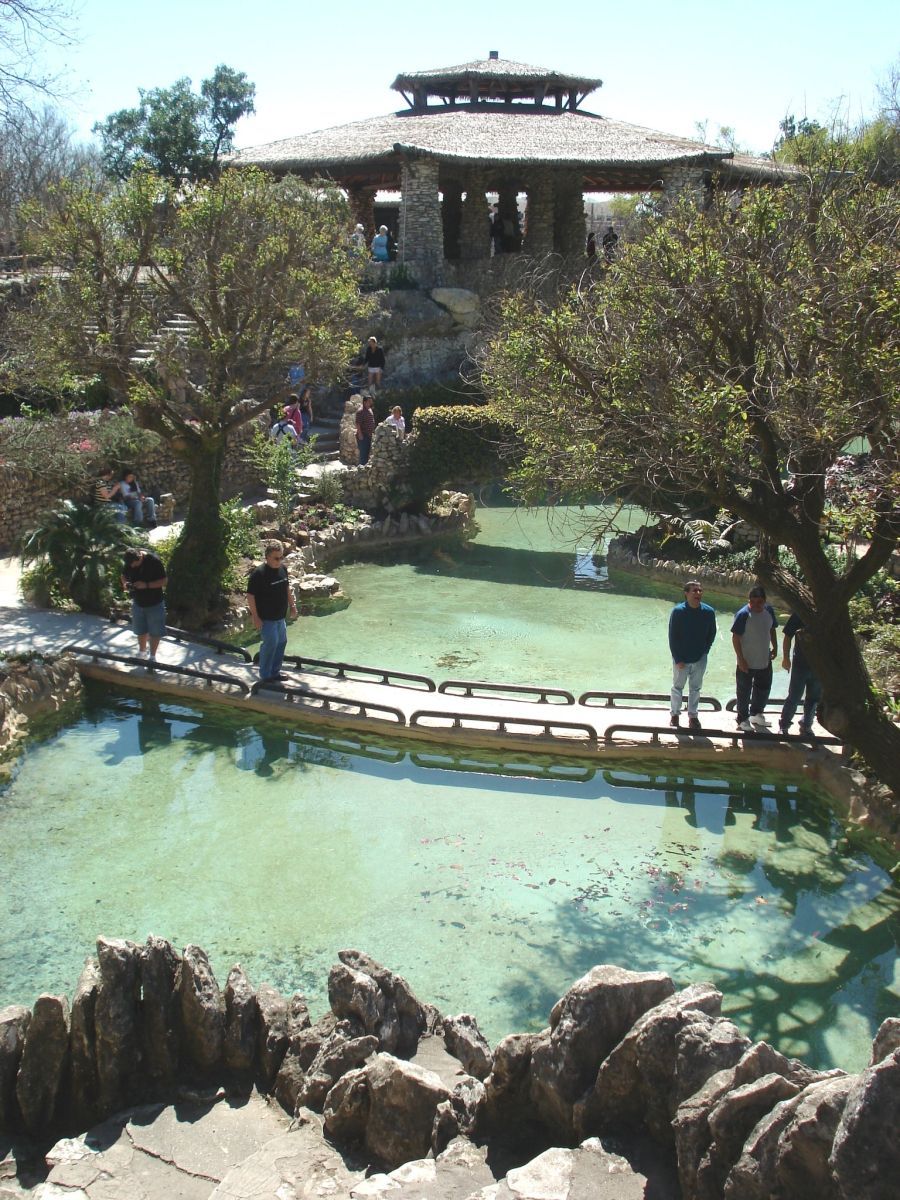If you are in a mood for some relaxation and fresh air while you are in San Antonio, Texas, then worry no more. Because we know exactly where you’re going to get that fix. The Japanese Tea Garden, or also known as Sunken Gardens, is located in Brackenridge Park in San Antonio, Texas. It opened in the early 20th century in an abandoned limestone rock quarry. The Japanese Tea Garden is listed on the National Register of Historic Places in the United States. In this article, we are going to know more about this serene attraction in San Antonio.
History
The San Antonio Japanese Tea Garden was developed on land given by the president of the San Antonio Water Works Company, George Washington Brackenridge. German masons first broke the ground in 1840, and they also used the readily available limestone to supply the construction market. In fact, several San Antonio buildings, such as the Menger Hotel, used the limestones to build their structure.
In 1917, Ray Lambert, City Parks Commissioner, envisioned an oriental-style garden in the quarry. That is why he asked his engineer to start developing plans. No work was done until private and individual donors gave funds for the project in 1918. Ray Lambert used prison labor to build the quarry into a complex that has stone arch bridges, walkways, and an island with a Japanese pagoda. Ray Lambert continued to improve the garden. In 1920, he continued to add new attractions to the garden, such as a small village of houses.
A Mexican-born artist, Dionicio Rodriguez, made the entrance to the garden, which replicated a Japanese Torii gate and made with a concrete construction that looks like wood. In 1926, the park added a Bamboo Room where tea and light lunches were sold.
Miyoshi and Kimi Jingu maintained and took care of the garden, lived in the park, and started their family with their eight children. Unfortunately, Kimi died in 1938. Three years after that, his family got evicted from the grass because of the rise of the anti-Japanese sentiment of World War II.
An amphitheater in the garden has 872 permanently installed chairs, and folding chairs could also be added to accommodate about 2,700 people.
As a nod to the Tea Garden’s origin as a rock quarry location and it’s an essential role in the cement business, the city of San Antonio dedicated the site to be a Texas Civil Engineering Landmark. Aside from that, the Japanese Tea Garden is also on the National Register of Historic Places.
Makeovers
For several years, the garden was left neglected; that is why it has also been a target of vandalism and graffiti. Because of limited funds, the city of San Antonio threatened to close the Japanese Tea Garden. However, the park supporters and the community lobbied and rallied to keep the park operating.
In 2005, the City of San Antonio, gave about $550,000 in bond money to help repair the roof of the pagoda-like pavilion and the Jingu House.
In 2007, the garden was renovated, wherein the waterfall and ponds were repaired. They also added a recirculation system that serves as a habitat for Koi fish and aquatic plants. The renovation cost about $1,587,470. It was done under the private-public partnership with the San Antonio Parks Foundation, the City of San Antonio, and Friends of Parks. In 2008, a grand reopening ceremony was done, and it was attended by the descendants of Park Commissioner Ray Lambert.
In 2009, the City of San Antonio, as well as the San Antonio Parks Foundation, began the $1 million restorations of the Jingu House, and it was completed in October 2011. Today, the building is now a restaurant that serves light lunches, just like the Jingu family did back in the 1930s.


